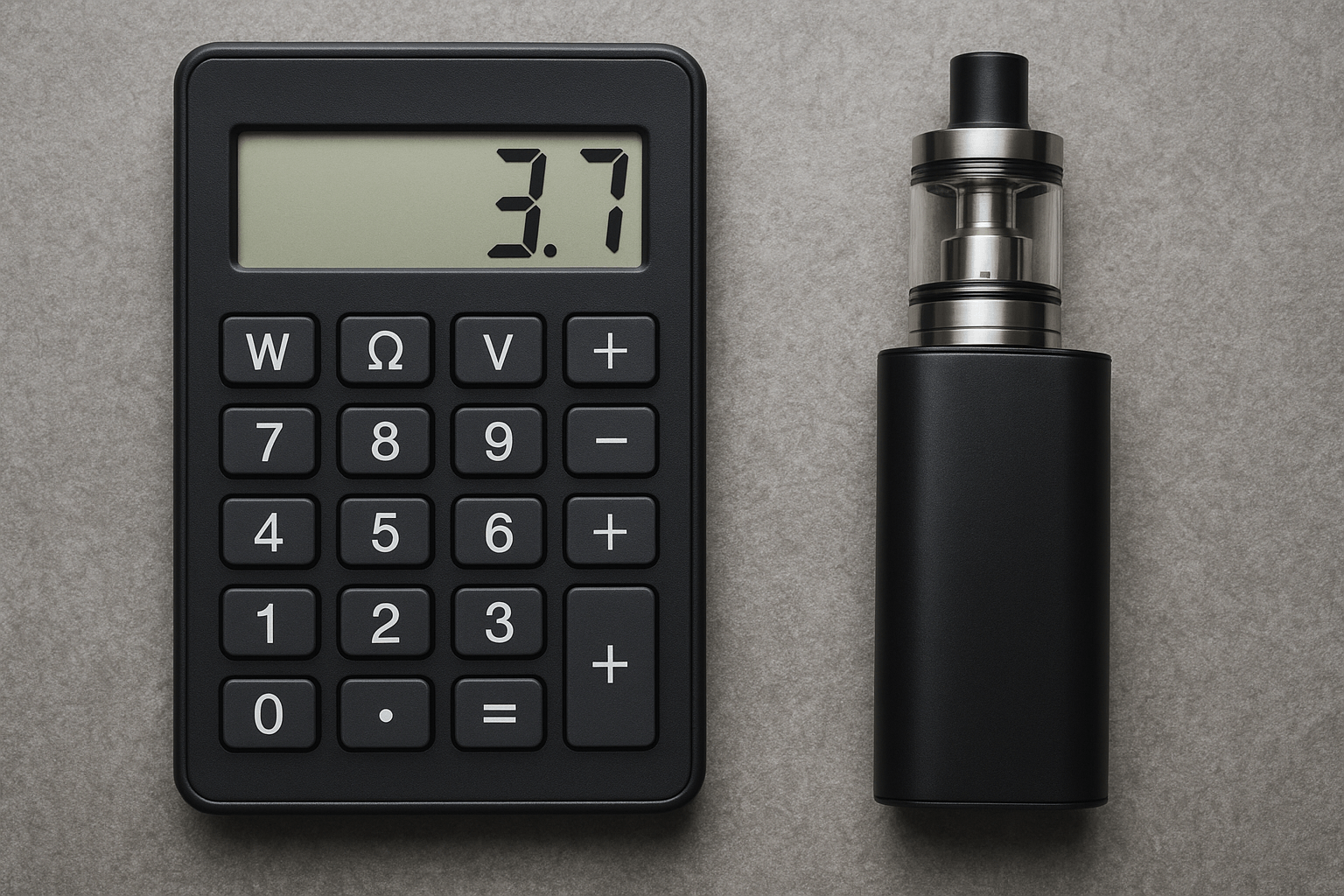Ohm's Law Calculator for Vapers: Find Optimal Wattage

Ever cranked up your wattage only to burn your coil—or turned it down too low and lost all the flavor? The secret to getting that perfect, satisfying hit every time isn’t luck—it’s science. That science is Ohm’s Law, and with our free Ohm’s Law Calculator, you can skip the math and instantly find the safest, smoothest, and most powerful settings for your vape.
Quick Navigation
- Why Ohm’s Law Matters in Vaping
- Key Concepts: Voltage, Current, Resistance & Power
- How to Use the Ohm’s Law Calculator
- Real-World Vaping Examples
- Safe Vaping Practices
- Troubleshooting Common Issues
- Master Your Setup with Confidence
Why Ohm’s Law Matters in Vaping
Ohm’s Law is a basic rule in electrical engineering that explains the relationship between voltage, current, and resistance. In vaping, applying Ohm’s Law helps you:
-
Customize your setup for maximum flavor or vapor
-
Extend battery life and prevent overheating
-
Avoid unsafe power levels and dry hits
-
Find the ideal settings for DTL (Direct-to-Lung) or MTL (Mouth-to-Lung) vaping styles
If you’ve ever wondered why your vape hits better at one setting than another, Ohm’s Law is the answer.
Key Concepts: Voltage, Current, Resistance & Power
Before you use the calculator, here’s a quick breakdown:
-
Voltage (V): The force pushing electricity from your battery
-
Current (I): The flow of that electricity, measured in amps
-
Resistance (R): How much your coil restricts the flow, measured in ohms (Ω)
-
Power (P): The energy your device uses—this is your wattage
Ohm’s Law Equations:
-
V = I × R (Voltage = Current × Resistance)
-
P = V × I (Power = Voltage × Current)
Using any two of these values, you can calculate the others—and that’s where our calculator comes in.
How to Use the Ohm’s Law Calculator
Using the calculator is quick and easy:
-
Enter any two values (such as resistance and wattage).
-
The calculator instantly solves the rest.
-
Use the results to confidently adjust your device settings.
Whether you’re switching coils, testing a new e-liquid, or building your own setup, this tool helps you stay safe and optimized.
Real-World Vaping Examples
Example 1: MTL Vaping
-
Wattage: 12W
-
Resistance: 1.2Ω
-
Voltage = √(12 × 1.2) ≈ 3.8V
Tight draws, strong flavor, less vapor
Example 2: DTL Vaping
-
Wattage: 60W
-
Resistance: 0.2Ω
-
Voltage = √(60 × 0.2) ≈ 3.46V
Dense clouds, wide airflow setups
Safe Vaping Practices
-
Know your battery limits: Never exceed the amp rating of your battery
-
Avoid dry hits: Always keep your wick saturated
-
Use compatible coils: Not all mods can handle every coil
Troubleshooting Common Ohm’s Law Issues
-
Device won’t fire? Resistance may be too low for your mod
-
Low vapor production? Try raising wattage or lowering resistance (safely)
-
Burnt taste? Power may be too high, or your wick may be dry
Master Your Setup with Confidence
Now that you’ve got the basics, it’s time to put Ohm’s Law into action. The calculator takes the guesswork out, so you can focus on what matters: flavor, clouds, and safety.
Final Thoughts
Ready to unlock the full potential of your vape? Use our Ohm’s Law Calculator every time you tweak your setup—whether you’re switching coils, experimenting with wattage, or rebuilding your rig.
Want more expert vaping tools, safety tips, and exclusive guides?
Subscribe to our newsletter and get fresh content delivered straight to your inbox.
Already tried the calculator? Drop a comment below and share your favorite vape settings—we’d love to hear from you!